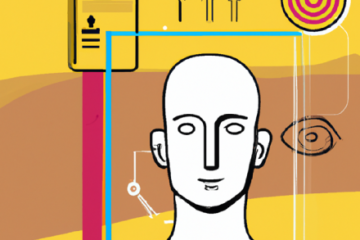CX Drives Customer Loyalty
Using Customer Experience to Drive Brand Loyalty

The pandemic forced the consumer into new habits. When there was a scarcity of their preferred brands, consumers had to try different brands.
When they could not go to their favourite stores, they had to rely on stores with digital storefronts to fulfil their needs. As a result of this, consumers found products and brands that were offering more than what they were getting from their usual brands. So, switching became a norm.
With increased expectations and ease of shopping, consumers are now willing to walk away from a brand that is not delivering the experience they want or need. Research shows that 40% of consumers tried new brands during the pandemic and as high as 80% of consumers have ditched brands because of dissatisfaction with customer experience.
80% of consumers have ditched brands because of dissatisfaction with customer experience.
There is only so much you can compete when it comes to pricing, features, value and service. After one point, these pretty much are standardized whether we talk electronics or banks or retail stores. The one thing that can help you gain a competitive advantage is how well you’re able to deliver your customer experience across touchpoints and customer journeys.
A robust CX, therefore, helps in driving brand loyalty that ultimately leads to advocates for your brand and repeat purchases from them. Here are three things your CX programme must keep in mind if it wants to drive this loyalty:
1. Know your customer: one size fit all does not work

While the short-term goal of your CX can be customer retention and sales, it remains a short-term goal. It is not enough to lead your customer to the checkout aisle – whether offline or online. You also have to ensure that not only do they come back, but they also spread a positive word about you and find value in what you provide.
The best way to understand what your customer wants is to listen and act. Listen to what they like, dislike and value so you can keep their feedback in mind while designing new products or services for them. It also helps you to determine what product or service is worth keeping and what should be scrapped.
As per research, 73% say CX is an important part of their purchase decision and 86% are willing to spend more for a better CX
When insights are used correctly and timely solutions are deployed, it can help propel your CX onto the next level of brand loyalty and trust.
2. Update your customer journey maps: collecting and consolidating data

If you want your CX to deliver brand loyalty, understanding where and how your customer is finding you is critical. For you, online and offline touchpoints may be different but for the customer, they are the same. So, you cannot prioritize one over the other, or give better CX on one journey over the other.
Start by defining your customer journey maps – who your customer is, where they find you, what they value and what they’re looking for. While making these maps, make sure you take inputs from across your organization and don’t make it in isolation, keeping only one or two pillars (like sales, or after-sales services) in mind. If you’re using a map that’s a few years old, update it, especially since buying behaviour has seen an overhaul because of the pandemic.
There may be different touchpoints as inputs that you’re using throughout the journey map to get data or feedback. However, you need to have a unified view of your customer.
According to research, customers use an average of six channels to find and buy from you.
So, your data will be scattered across these channels and consolidating it can be challenging. This is where a service that can collect, analyse and give actionable insights can be of help.
3. Role of employees: cross-organization support

Having insights into your customers’ needs and wants are a great place to start building their loyalty to your brand but it will be incomplete if your employees aren’t a part of that as well.
Research says two-thirds of the workforce is disengaged from CX leading to a far inferior delivery of CX.
CX cannot just be something that frontline employees are working towards or the top management is making plans on. It has to be a company-wide policy, not restricted to one department. Ideally, it should be a part of your culture. Because only when your employees understand the need and business case of CX will they be committed to its vision.
Only when your employees are engaged will they go the extra mile to help unhappy customers or anticipate a customer’s needs and provide solutions accordingly. Only when they feel valued, heard and empowered can they in turn extend that to the customer.
Got questions? Contact us to get a detailed understanding and a demo from one of our CX experts.
*All research data is taken from this source: https://technative.io/how-great-customer-experience-can-drive-brand-loyalty/


